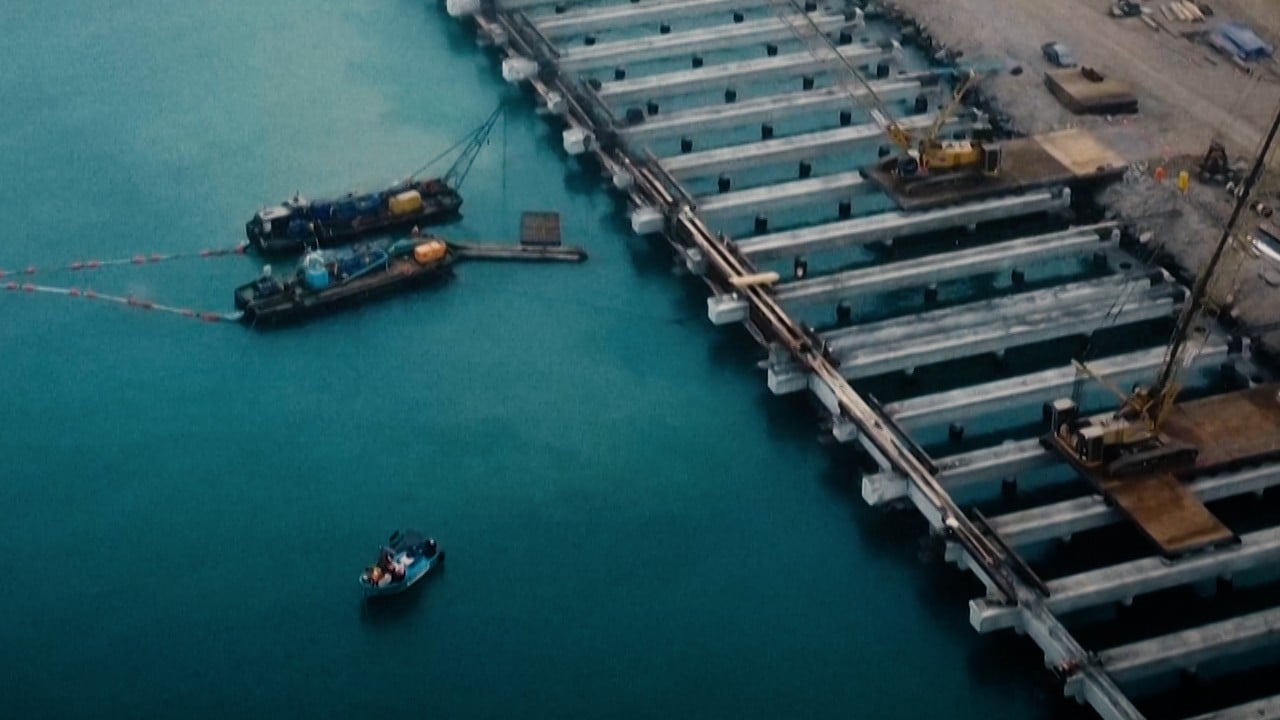The country’s first fully automated container terminal began service in Qingdao in 2017. It relied on complex information systems that were “monopolised by foreign manufacturers”, Chen Qiang, the deputy manager of information technology at the port, said in a report by state-owned newspaper Guangming Daily on Monday.
Melbourne container terminal buys two cranes from Shanghai Zhenhua Heavy Industries
Melbourne container terminal buys two cranes from Shanghai Zhenhua Heavy Industries
Automated container terminals, which load and unload cargo between ships and transport vehicles autonomously, require complex software, Chen said.
The more than 28,000 components of the third phase of the automated terminal – both hardware and software – were produced by research teams at the port along with 20 domestic manufacturing companies, the report said.
The technology has not only boosted the efficiency of the terminals, but could also allow the country to further widen its lead in the global adoption of automation.
A software research and development team of just 30 people worked hard for “many days and nights” to create the systems, Chen said.
“The research team broke down more than 1,500 business processes bit by bit and classified more than 2,200 system functions,” to form an initial prototype, Chen added.
The research team tackled issues like outdated software and devices that needed frequent maintenance by developing control systems with “millisecond-level” speeds to increase efficiency by four times, he told Guangming Daily.
The new system in the terminal’s third phase set a new industry record just a week after it went into operation, with a single machine loading and unloading 60 standard container units per hour, according to Guangming Daily.
Developing the equipment that would run the terminal was also a big hurdle, according to Liu Fangchao, deputy manager of the engineering technology department of the port.
Huawei’s automated tech on full display at Tianjin Port in commercial pivot
Huawei’s automated tech on full display at Tianjin Port in commercial pivot
Building autonomous trucks posed a particular challenge because of their heavy-duty drive axles, Liu told Guangming Daily, adding they had limited domestic research about them.
The team found a local manufacturing company that also “wanted to break the blockade of foreign key technologies”, and began working together to develop their own axles.
Liu said that developing technology domestically, independent of foreign controls, was important to overcome many issues inherent in automated ports, improve the efficiency of those ports and master their control systems.
Relying on overseas smart technology could also prove dangerous if foreign sanctions were targeted at China’s ports.
China looks to AI to navigate massive overhaul of waterway transport
China looks to AI to navigate massive overhaul of waterway transport
Only four of America’s 350 ports are automated, thanks largely to resistance from port worker unions.
The Canadian branch of the International Longshore & Warehouse Union, which also operates across the US, said in 2019 that the automation of port terminals in British Columbia would “kill thousands of jobs”.
China’s transport ministry said last month that it would continue to implement smart technology in the country’s waterways.
China has also begun sharing its domestically produced port automation technology with countries in the Belt and Road Initiative, Guangming Daily reported.



